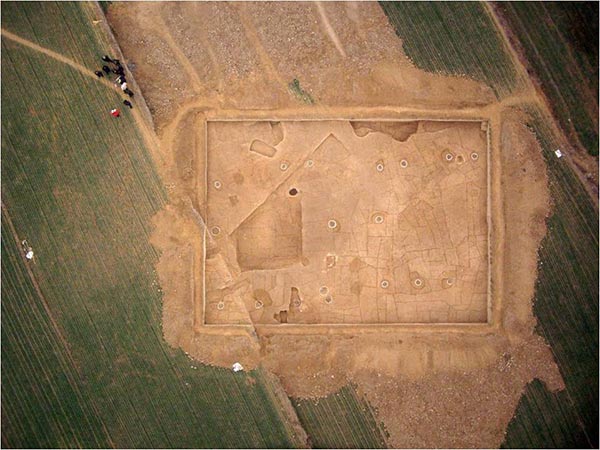
An aerial view of the archaeological site of Taosi, which is thought to be the origin of Chinese civilization, in Linfen, Shanxi province. [Photo provided to China Daily]
The remains of what could be the birthplace of the Chinese civilization-pending further archaeological studies-were unearthed to an extent in North China earlier this year after a three-decade excavation. And the first part of a report covering the excavation activities from 1978 to 1985 was released on Saturday.
Spread across 2.8 square kilometers, in Shanxi province's Linfen city, the relics of Taosi, thought to be 4,300 years old, are presented in words and more than 500 photos in the voluminous report by the Chinese Academy of Social Sciences, the top government think-tank of its kind.
Taosi may have been Emperor Yao's capital that was abandoned around the 19th century BC.
While the first draft of the report was written in the early 1990s, data scrutiny and updating of the findings at the site continues.
Yao's rule is estimated to have started in 23rd century BC, with some of his legends figuring in Records of the Grand Historian, also known as "Shiji", a book from the first century BC. But little archaeological evidence of his rule had been found until excavations in Shanxi began in recent decades.
"The appearance of a city surrounded by high halls is symbolic of the birth of a civilization," says Bai Yunxiang, deputy director of the Institute of Archaeology, an affiliate of the Chinese Academy of Social Sciences.
"We've found other city relics in China that existed earlier than Taosi. However, none of them have the clear layouts and structures of palaces that Taosi has.
"Taosi is the earliest capital-level city ever unearthed in China," he tells China Daily.